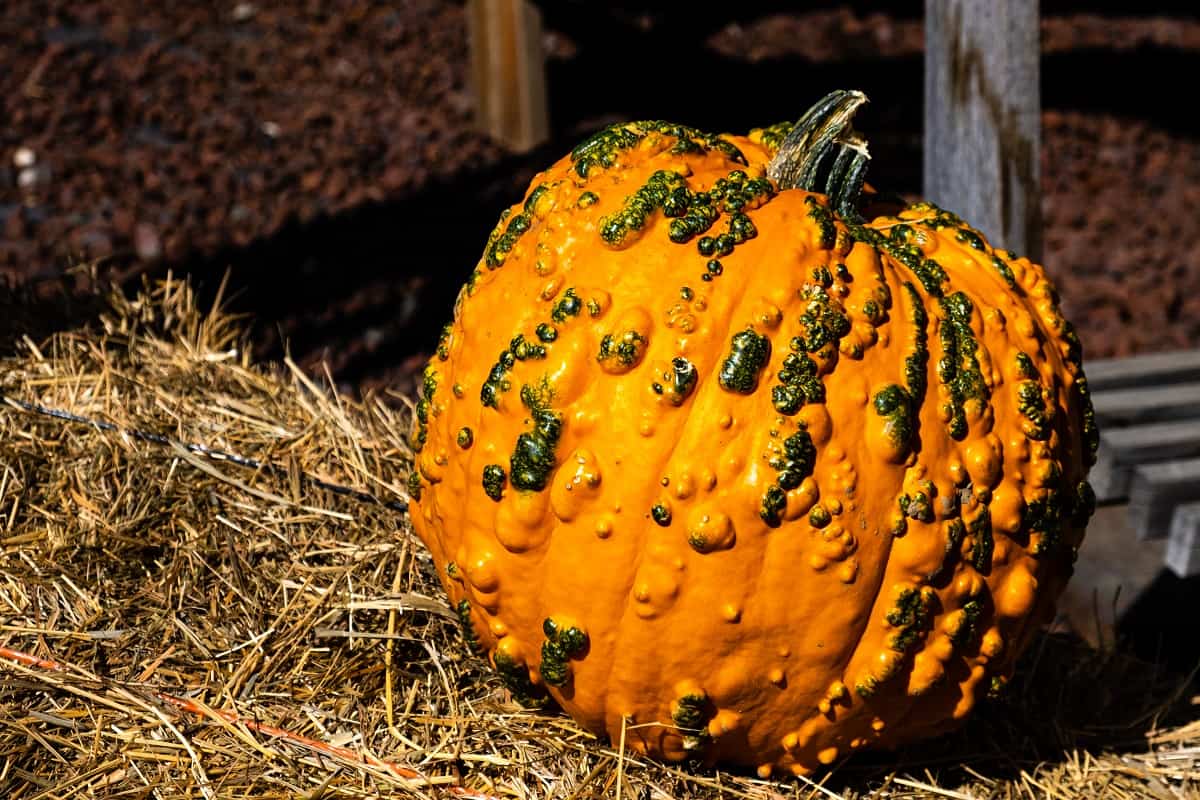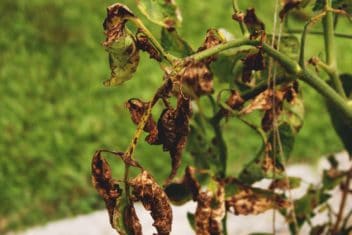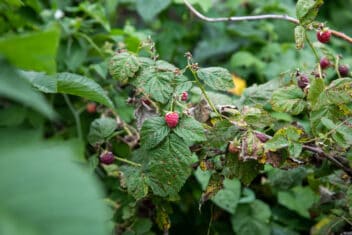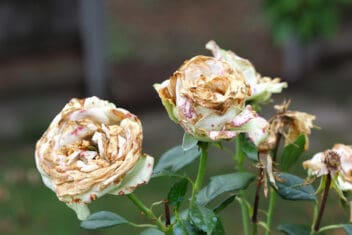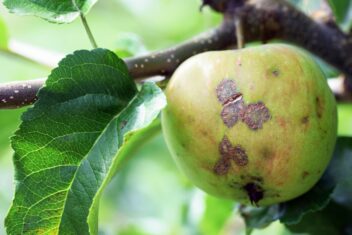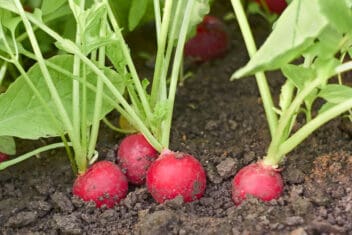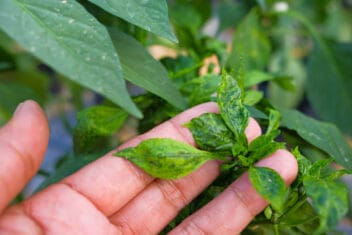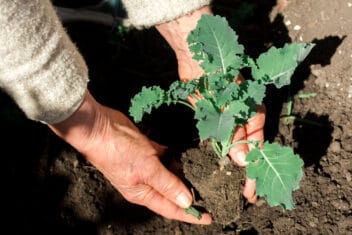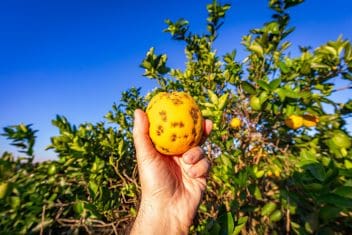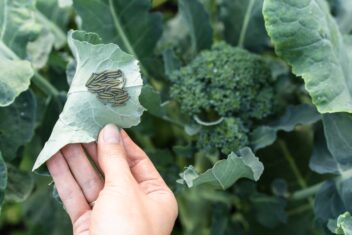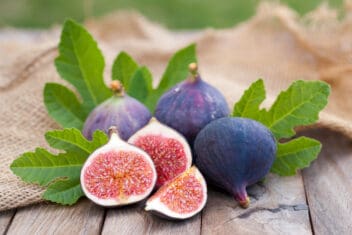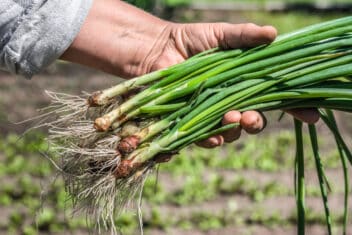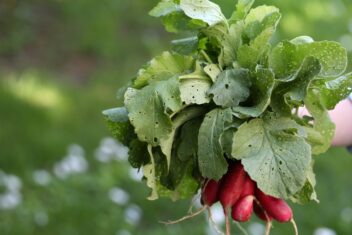Last year, I discovered just how much fun it is to grow those odd, “ugly” varieties of gourds and pumpkins.
You know what I’m talking about – the ones covered in strange colors, bumps, grooves, and indentations.
I had a blast experimenting with the different shapes, sizes, colors, and textures.
However, if you planted pumpkins and were hoping to have a more uniform crop of round, orange fruits, you might be a bit dismayed if your crop is loaded with imperfections like the ones mentioned above.
Why does this happen?
Sure, your seed order might have gotten mixed up – and you may have received warty “Super Freaks” instead of your traditional Connecticut Field Pumpkins.
If you notice that other telltale symptoms accompanied these odd appearances, though, you might be dealing with an outbreak of pumpkin mosaic virus.
This is a disease that can ravage all kinds of cucurbit plants, including cucumbers, squashes, and pumpkins. Here’s what you need to know about how to identify, prevent, and treat it in your pumpkin patch.
What is Pumpkin Mosaic Virus?
There are a variety of pathogens that can cause mosaic viruses in pumpkin plants, as there are with other kinds of plants, too. Mosaic viruses are usually named after the plant in which they were first identified, but they don’t tend to be exclusive to those plants.
For example, the zucchini mosaic virus, also known as ZYMV, was first discovered in zucchini, but it can affect other plants besides just zucchini.
Mosaic viruses can affect all kinds of plants, including weeds. In fact, this is often how viruses make the jump to more desirable plants, like pumpkins – they hitch a ride on weeds in your garden first.
The only way to know for sure if it’s pumpkin mosaic virus or another kind of mosaic virus (or a different virus entirely) affecting your crop is to send a sample to a lab for testing. This isn’t necessary, though, since the steps for treating viral infections are the same regardless of which virus is affecting your plants.
Pumpkin mosaic virus is sometimes referred to as cucumber mosaic virus. It can also affect squashes, melons, nightshade plants (like tomatoes, eggplants, and potatoes), and leafy greens.
Symptoms and Signs
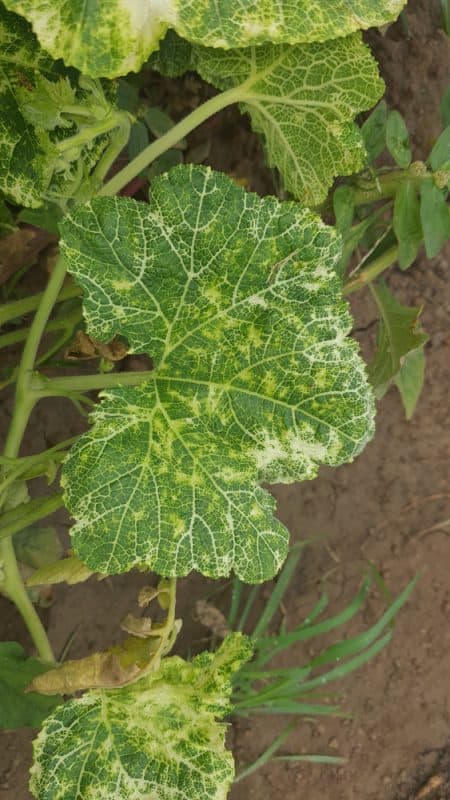
Pumpkin mosaic virus will cause several telltale symptoms in your plants. Most of these are apparent after your pumpkins have already formed, but some symptoms can manifest really at any time.
The most obvious sign is pumpkins that are striped with yellow or green. They can be blotchy or have areas that are deformed, bumpy, or warty. Pumpkins are sometimes undersized or never develop at all. You may even notice a bit of rot.
Overall, the yields of plants impacted by the pumpkin mosaic virus tend to be much lower. Plant growth is often stunted and the flowers can be unusually sized. Often, some leaves are puckered, contorted, or shriveled. They may have mottled coloration, too.
This can actually be the most telling symptom of the mosaic virus, in many cases. The leaves will develop a coloration that looks like a “mosaic,” which alternates shades of yellow and green.
Finally, you may notice that symptoms are more pronounced when there are periods of warm weather following the summer solstice. Certain insects, like aphids, can also hasten the spread of the pumpkin mosaic virus, so you may notice these on or around your plants during an outbreak, too.
How to Prevent Pumpkin Mosaic Virus
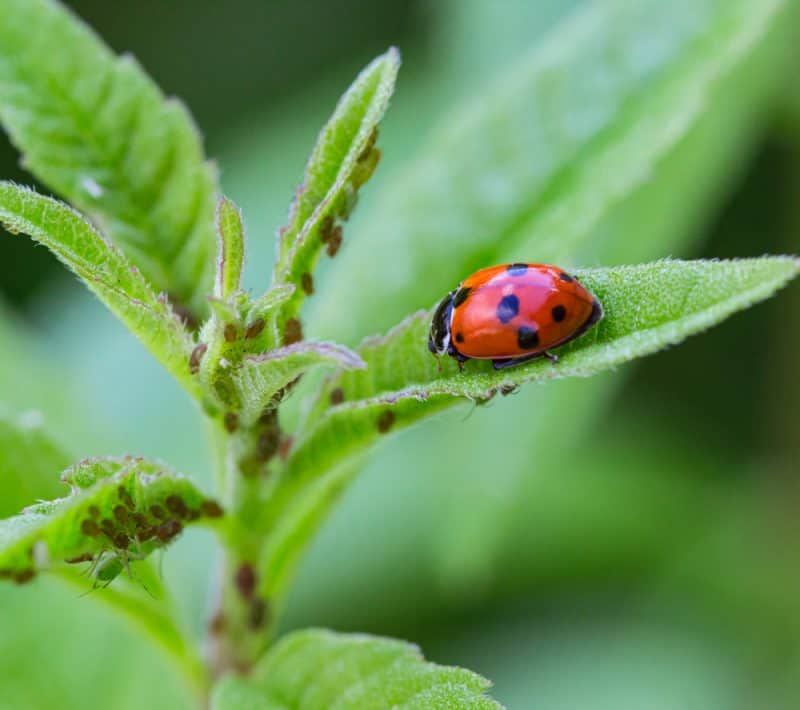
Here are some tips to prevent pumpkin mosaic virus in your pumpkin patch. Although the majority of these are most effective when they are undertaken before infection, they can also help reduce the rate of transmission once you’ve noticed the problem, too.
1. Reduce Aphids
Although pumpkin mosaic virus can spread in your patch in a variety of ways, one of the most common vectors for this disease is the aphid.
Therefore, if you want to prevent the virus, you’ve got to get rid of the aphids. There are a few ways to keep aphids off your plants.
One of the easiest, if you only have a few, is to blast them off your plants with the hose as you water. You can drop them in a bucket of soapy water to kill them.
2. Rotate Crops
You probably already know that pumpkins and related plants, like squashes, grow best on soils that are sandy loam or silt loam with a pH of around 6-7. This can limit where you grow these crops in your garden, causing you to select the same planting site year after year for your pumpkins.
However, it’s important that you don’t plant pumpkins and related plants, including cucumbers and squashes, in the same spot each year. This will reduce the likelihood of diseases like pumpkin mosaic virus as well as various pests that target pumpkins from overwintering in the soil and striking again and again.
If you can, attempt a 3-4-year rotation.
Wait several years before returning to any given spot. Ideally, you should wait longer if you had an issue with pumpkin mosaic virus in the past.
3. Weed Regularly
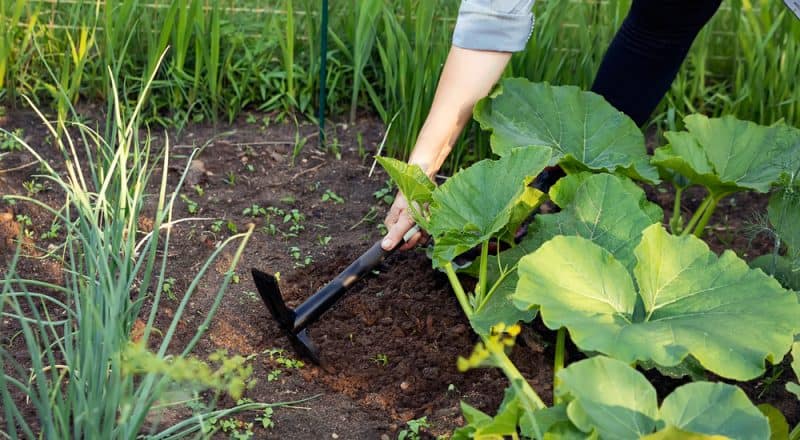
Controlling weeds is essential when it comes to preventing pumpkin mosaic virus. Many kinds of weeds serve as a host for the disease.
Plus, when aphids and other insects feed on these plants, they’ll spread the virus to your other garden plants.
So, the mosaic virus can affect many plants besides just pumpkins. Because of this, it’s important to get the spread of this disease under control before it can become a larger issue.
4. Keep the Garden Clean
To prevent the spread of disease (and to limit your garden’s potential to attract pests), clean the garden up throughout the growing season.
It’s also important that you do this as well at the end of the growing season. Get rid of any plant matter or leftover fruits. Dispose of any disease-ridden plants in the garbage rather than composting them.
Keep your tools clean, too. At all times, but especially if you’re handling diseased plants, be sure to wear gloves or wash your hands diligently between tasks.
Disinfect your tools with a sterile bleach solution to make sure you aren’t inadvertently spreading pumpkin mosaic virus from one plant to the next.
5. Buy Clean Seed
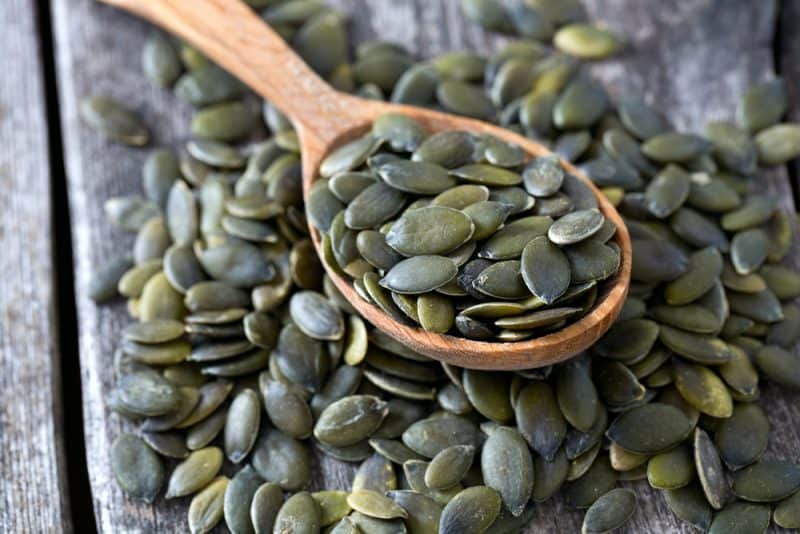
This virus can also spread through seeds. Buy only clean seed from a reputable supplier. If you save your own seeds for next year’s use, don’t collect and save seeds from plants that were infected.
If you aren’t sure about the quality of the seeds you buy, soak them in a 10% bleach solution before planting. This will help rid the seed of any potential pathogens before they go into the ground.
6. Plant Resistant Cultivars
Not all kinds of plants have cultivars that are resistant to the mosaic virus. Tomatoes, for instance, aren’t very resistant to this disease.
However, you’re fortunate if you’re growing pumpkins because several types have good natural resistance to this disease. Some of the best to consider are Magician, Corvette, and Orange Bulldog.
Treating Pumpkin Mosaic Virus
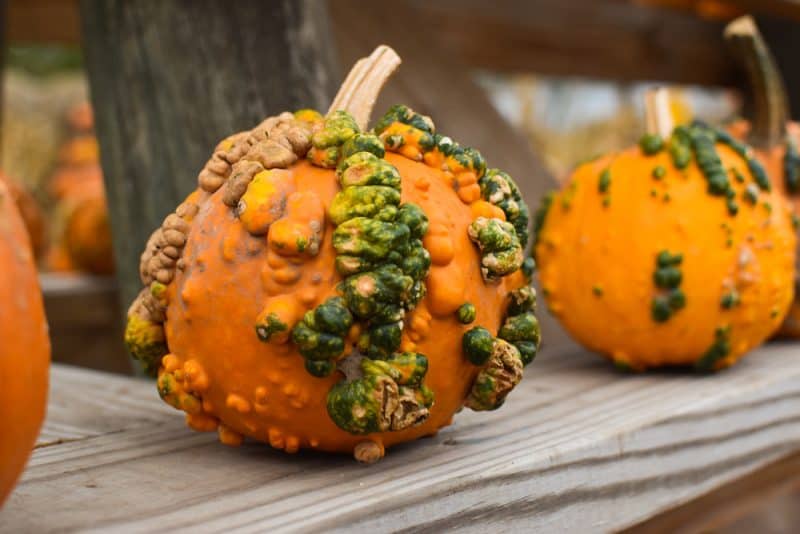
There aren’t many treatments that will reliably get rid of pumpkin mosaic virus. There are no pesticides or other treatments that can reverse the symptoms of viral infection, so making sure you have a good prevention system in place is by far the best way to control this disease.
If you notice plants with pumpkin mosaic virus, remove them from the garden and destroy them. This can be hard to do, especially when you consider how much work you’ve put into cultivating them, but it’s necessary to prevent the spread to other plants.
Don’t compost these infected plants. The viruses can linger for quite some time, even in a hot compost. Burn the plants or throw them out in the trash.
Keep a close eye on the rest of your plants, particularly those that were growing close to the infected plants. With any luck, the virus will only have affected a few plants – and you can continue with the growing season as usual.
In the future, be sure to take steps to prevent pumpkin mosaic virus and similar diseases. While it can be tough to eradicate this disease, it’s easy enough to prevent by being thorough!
